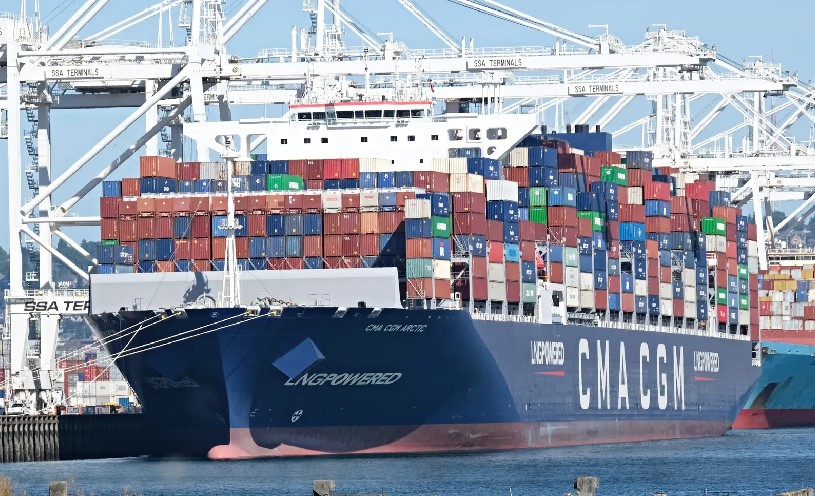Boxship fleet upgrades stir debate

The CMA CGM Arctic, a giant 15,264 teu containership, only made its maiden voyage out of the docks of Hyundai Samho shipyard in South Korea in June 2022, and yet it is already being penned in for a drydocking
The 366 m long ship (pictured) is one of the first of around 100 vessels French liner CMA CGM has contracted Damen Shipyards to modify in order to generate fuel efficiencies.
“The fact that this vessel is barely two years old illustrates that the industry as a whole has underestimated how much and now permanently slow-steaming would change the liner landscape,” analysts at Alphaliner stated in their latest weekly report, adding: “Many large mainline ships, including fairly modern ones, are overpowered and thus not as efficient as they could be.”
Taking issue with the Alphaliner viewpoint, Lars Jensen, CEO of container advisory Vespucci Maritime, told Splash: “I do not see this as lack of foresight on the part of the carriers – instead this should be seen as a high degree of willingness by the carriers to keep investing in upgrading in their vessels as newer and better technologies become available.”
In recent years liners have made changes to bulbous bows, installed giant windshields and experimented with a range of technical improvements in a bid to slash fuel costs.
Slow steaming is not new. Before the global financial crisis, containerships were generally designed to have a maximum speed of 25 knots, with pro forma schedules usually set at around 19 knots, and then with delays speeds of around 21 knots were quite common.
In 2009, Maersk, followed by others, reduced all speeds down to 17 knots to save fuel and money, as the liner industry bled billions of dollars of red ink. 17 knots was basically what the engine manufacturers recommended as the slowest sustained speed, without harming the engines.
Maersk also tested a few ships in the Atlantic at 15 knots for sustained periods, and no engine damage was observed and soon the industry as a whole moved to speeds of around 14 to 15 knots since around 2010.
When the EEE-Maersk ships were built capable of carrying 18,000 teu in 2011 and 2012, they had a maximum speed of no more than 22 knots. Engines were de-rated, and these ships were designed for slow steaming.
Since the financially disastrous period of 2015-2016, slow steaming has become the norm with more ships added to loops to make up slower transit times. Any ship built after this period should have been designed for very slow steaming.
A host of other cash-rich global liners such as Maersk and Hapag-Lloyd have recently earmarked a portion of their fleets for emissions-saving upgrades.
The global ship repair sector looks poised for strong revenue growth in the coming years as recently enacted 2030 green targets set by the International Maritime Organization collide with an ageing merchant fleet.
Recent data from Clarksons Research shows that 35% of the global merchant fleet ranks as D and E in terms of IMO’s Carbon Intensity Indicator, something that will require changes. 31% of the global merchant fleet is now above 15 years old, according to Clarksons.
A recent report from UK consultancy Thetius suggests the global ship repair market will grow from a market size of $46bn this year to $83bn by 2029.





